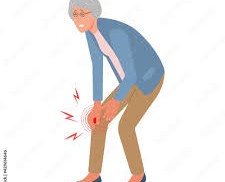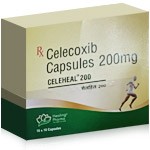Osteoarthritis:Understanding, Managing, and Finding Solutions


What is Osteoarthritis and How Does it Affect Us?
Osteoarthritis (OA) is a progressive joint disease that causes the cartilage in the joints to break down over time. It is often considered the "wear and tear" arthritis because it usually develops as a result of years of stress on the joints. OA most commonly affects the knees, hips, hands, and spine, making even simple tasks challenging.
- Joint pain: As cartilage wears down, bones rub against each other, leading to pain.
- Stiffness: Reduced joint flexibility makes movement harder, particularly after rest.
- Swelling: Fluid builds up in the joint, contributing to inflammation and discomfort.
- Decreased mobility: As the condition worsens, people may find it difficult to move the affected joints.
Osteoarthritis tends to be more common with age but can also affect younger individuals due to factors like injury, genetics, or obesity. Understanding OA's causes and symptoms is crucial for managing the condition effectively.
Causes and Risk Factors of Osteoarthritis
The exact cause of osteoarthritis remains unclear, but certain factors significantly increase the likelihood of developing the condition.
- Age: OA typically affects people over 50, though younger individuals can also develop it.
- Genetics: Some individuals inherit genes that make them more likely to develop OA.
- Gender: Women are more likely to develop OA than men, especially after menopause.
- Obesity: Excess weight puts additional pressure on weight-bearing joints, like the knees and hips.
- Previous joint injuries: Past trauma to joints increases the risk of developing OA.
In most cases, a combination of these factors accelerates the breakdown of cartilage, making joints less able to absorb shock. It is essential to manage the risk factors and take preventive measures to slow the progression of osteoarthritis.
Symptoms of Osteoarthritis: Early Signs and What to Look Out For
Osteoarthritis symptoms can range from mild discomfort to severe pain, which can interfere with daily activities.
- Pain during activity: The pain often worsens after physical activity or at the end of the day.
- Morning stiffness: Joint stiffness after waking up, which improves after moving around.
- Tenderness: Joints may feel tender to the touch, especially when pressure is applied.
- Crunching or grating sounds: The sound of bones rubbing against each other may be heard.
Early detection of symptoms and seeking medical advice can help slow the progression of OA. Lifestyle changes such as reducing activity levels or adding supportive devices (e.g., braces) may help reduce discomfort.
Diagnosing Osteoarthritis: Methods and Tools
A proper diagnosis of osteoarthritis is crucial for effective treatment. Various methods are used by healthcare providers to diagnose OA.
- Physical examination: A doctor will inspect the affected joints for tenderness, swelling, and range of motion.
- X-rays: X-ray imaging can reveal the extent of joint damage and cartilage loss.
- MRI (Magnetic Resonance Imaging): For detailed images of cartilage and soft tissues, an MRI might be used.
- Joint fluid analysis: In some cases, a sample of joint fluid is taken to rule out other conditions.
Early diagnosis helps prevent the worsening of symptoms and allows for early intervention, which can greatly improve the patient's quality of life.
Treatment Options: Managing Osteoarthritis Symptoms
While there's no cure for osteoarthritis, several treatment options can help manage symptoms and improve function.
- Medications: Over-the-counter pain relievers like acetaminophen or NSAIDs can reduce pain and inflammation.
- Physical therapy: Customized exercises can help strengthen muscles around the joints and improve mobility.
- Weight management: Maintaining a healthy weight reduces stress on joints and can alleviate pain.
- Surgery: In severe cases, joint replacement surgery or other interventions may be necessary.
By incorporating a combination of treatments, people with OA can reduce pain and improve their mobility, allowing them to lead a more active lifestyle.
The Role of Celeheal (Celecoxib) in Osteoarthritis Treatment
One of the most commonly prescribed medications for managing osteoarthritis pain is Celeheal (Celecoxib), a nonsteroidal anti-inflammatory drug (NSAID).
- Pain relief: Celeheal effectively reduces pain caused by inflammation in OA.
- Anti-inflammatory action: It helps reduce swelling in the affected joints, improving comfort and mobility.
- Selective COX-2 inhibitor: Unlike traditional NSAIDs, Celeheal targets COX-2 enzymes responsible for pain and inflammation, minimizing gastrointestinal side effects.
Celeheal is an important option for those struggling with OA, especially when other treatments have proven ineffective or when pain relief is needed for daily activities.
How Celeheal Helps Control Long-Term Osteoarthritis Pain
Celeheal not only provides short-term relief but also contributes to long-term management of osteoarthritis symptoms. By reducing inflammation, it helps to preserve joint function, making it easier to perform daily tasks.
- Improved mobility: Reducing joint inflammation allows for greater movement and flexibility.
- Long-lasting effects: Regular use of Celeheal can help keep pain and swelling under control, enhancing quality of life.
- Reduced need for stronger pain medications: With its effectiveness in controlling OA pain, Celeheal can reduce reliance on stronger, more harmful medications.
For individuals struggling with chronic osteoarthritis pain, Celeheal offers a significant step toward regaining comfort and mobility.
Managing Osteoarthritis: A Path Forward
Osteoarthritis can be a debilitating condition that affects daily life, but with the right approach, it is manageable. Understanding the causes, symptoms, and treatment options, including medications like Celeheal, can significantly improve a person's quality of life.
- Proactive lifestyle: Early intervention and lifestyle changes can help slow disease progression.
- Regular exercise and weight management: Keeping joints active and healthy through weight control and exercise is key.
- Effective medication: Drugs like Celeheal can provide necessary relief and keep symptoms in check.
By combining proper care, regular monitoring, and medical treatment, osteoarthritis sufferers can maintain an active and fulfilling life.
Conclusion
In conclusion, osteoarthritis is a challenging condition that affects millions globally, causing pain, stiffness, and mobility issues. While it cannot be completely cured, early intervention, proper management, and medications such as Celeheal (Celecoxib) can make a significant difference. By maintaining a proactive approach to managing symptoms and staying informed, individuals with osteoarthritis can continue to live life to the fullest.
Article Post: Editorial Team of RXShop.md
(Updated at Jun 6 / 2025)

